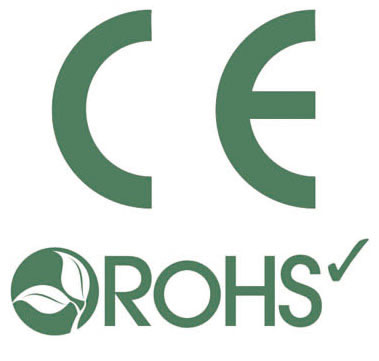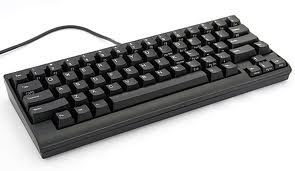CE and RoHS
 The hardware manufacturer recommended by us, meet the CE-RoHS, 2002/95/EC, 2002/96/EC, 2003/108/EC, regarding the reduction of hazardous substances, in electrical and electronic equipment, as well as waste disposal, enacted in Italy by Legislative Decree No. 151 of 25 July 2005 (G. U. 175 of 29/05/05 Et Ord. 135)
The hardware manufacturer recommended by us, meet the CE-RoHS, 2002/95/EC, 2002/96/EC, 2003/108/EC, regarding the reduction of hazardous substances, in electrical and electronic equipment, as well as waste disposal, enacted in Italy by Legislative Decree No. 151 of 25 July 2005 (G. U. 175 of 29/05/05 Et Ord. 135)
System components Theremino, are electronic components, supplied in kit form, as modular elements of a system. Not being available to the end user, with a purpose, not covered by the directive 1989/336/EEC 3.5.1989, transposed by Presidential Decree No. 476/1992, electromagnetic compatibility, of electrical and electronic equipment, together with equipment and installations, containing electrical components, and/or electronic.
The duty to respect the limits of the law, radio frequency emissions, and obtain the necessary certifications, It is for anybody connecting electronic components and component kits, in a system. To reduce noise within legal limits, You may need, Depending on the case, use shielded cables, metal containers or other measures. Manufacturers and retailers of the system Theremino, not being aware of the actual conditions of working with forms, cannot respond, for improper use, illegal or dangerous of them.
For advice on how to comply with the limits of the law, on disturbances and armatures, see chapters: “Protect the communication line from electrical noise” and “Avoid that line of communication radio communications disorders”, on this page: technical/connection-cables # noises
WEEE
Waste electrical and electronic equipment (WEEE) or, IN ENGLISH, waste of electric and electronic equipment (WEEE), consist of any electrical equipment, or electronics, of which the holder intends to discard, as Mars, unused, or obsolete. By recovering differentiated, of materials, avoiding a waste of resources, and it contributes to environmental sustainability.
 Since, for small modules, overhead expenses for shipment of WEEE waste, are greater than what you save, You should not ship obsolete modules to retailers, but to provide personally, and for free, at the nearest centre, the municipal collection centre network, You can see the full list, by clicking on the following link: www.unocontrouno.it/centri-di-raccolta-raee-domestici.aspx
Since, for small modules, overhead expenses for shipment of WEEE waste, are greater than what you save, You should not ship obsolete modules to retailers, but to provide personally, and for free, at the nearest centre, the municipal collection centre network, You can see the full list, by clicking on the following link: www.unocontrouno.it/centri-di-raccolta-raee-domestici.aspx
The system Theremino want to optimize each stage, from design to production, with the utmost respect possible, for the environment, and living things: www.theremino.com/contacts/environmental-protection
Details about CE certification
There is a misconception, that all electronic components, must have CE certification. But just scroll down the catalogues Farnell, RS and Mouser, to find out that most products for sale, is not CE certified. This is not due to negligence, but the fact, that there are certifiable products, and others who are not.
The distinction between certifiable products, and not certifiable is explicitly contemplated, in the documentation with CE:
- I'm certifiable (and must display the CE mark), products available to end users.
- Are not certifiable (and cannot expose the CE mark), electronic components.
Electronic components such as resistors, they do apparently not certifiable products, but there are more complex products, called modules, that can be confusing.
The distinction depends on maybe, the number of components that make up the form? No, the distinction between electronic components, and finished products shall be specified by the CE mark, to ensure the safety of users. The CE mark is not, How many mistakenly believe, a “certificate of quality” of the product, but an “certificate of no objection "”, for the end user.
In order to be certified as safe, a product must not expose the metal parts under voltage, pointy or sharp, must have insulated container, and the user should be warned, with a label, do not open the container.
AVen if the voltage is low, There is a risk that the user inadvertently cause short circuits, metal objects, with a metal chain around his neck, or that you're working on a metal table.
There is also the danger that an inexperienced user, performs hazardous electrical wiring, such as, connect with low voltage connectors, mains from 220 Volts. Similar errors can cause fires, explosion of components, and even destroy the connected computer but, even worse, may endanger the lives of people. Are concrete risks should not be underestimated.
In summary: A product with CE mark, must have a purpose, obvious to everyone and instructions on how to use it. Its connectors must have a form, that will not allow to connect them incorrectly. It shall not be possible to, accessing internal connectors, or metal parts under voltage, and the presence of an insulating container is essential.
Certifiable products



The Mouse, keyboards and printers are examples of products certified, that must request and display the CE mark.
Products not certified

Electronic components, electronic kits and modules, that do not have insulated container, cannot apply for certification, and should not expose the CE mark.
In these examples, all regularly for sale at Farnell without CE mark, are apparent metal parts under voltage, and parts that can sting or cut, If handled carelessly. In addition, You cannot define a precise use, for the end user. The modules of the system Theremino (But even Arduino, Raspberry & accessories), included in this category.
– – – – – – –
The Group Theremino (that only deals with research and doesn't produce and doesn't sell modules) suggests the producers, not require the CE marking. Not to deceive customers with false assurances.
Although this will decrease sales, It is better not to risk. If one day someone get hurt, must be clear, We don't have contributed.
The modules of the system Theremino, are “electronic components”, are not intended for the final user, and must be assembled with cognition. Improper use makes them dangerous, exactly like every other electronic component (1)




